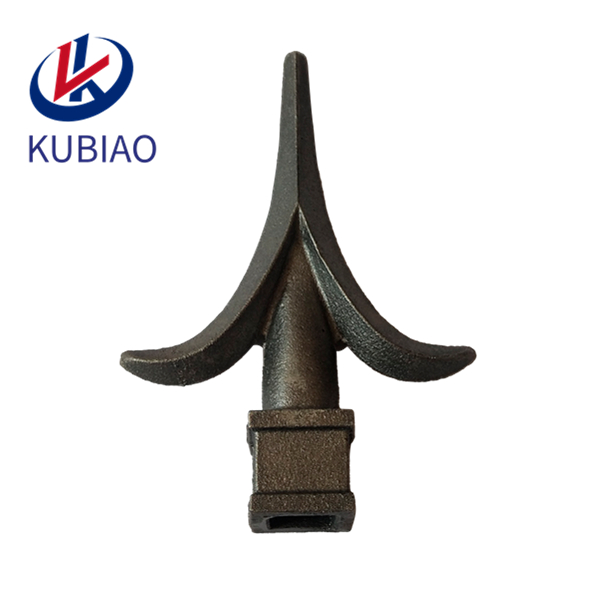
Cast iron spear SP-E05
Size: □1/2" 137X90
□5/8" 137X90
Material: Cast Grey Iron
Application: Iron fence gate decoration
Cast Iron Ornaments Popular Model
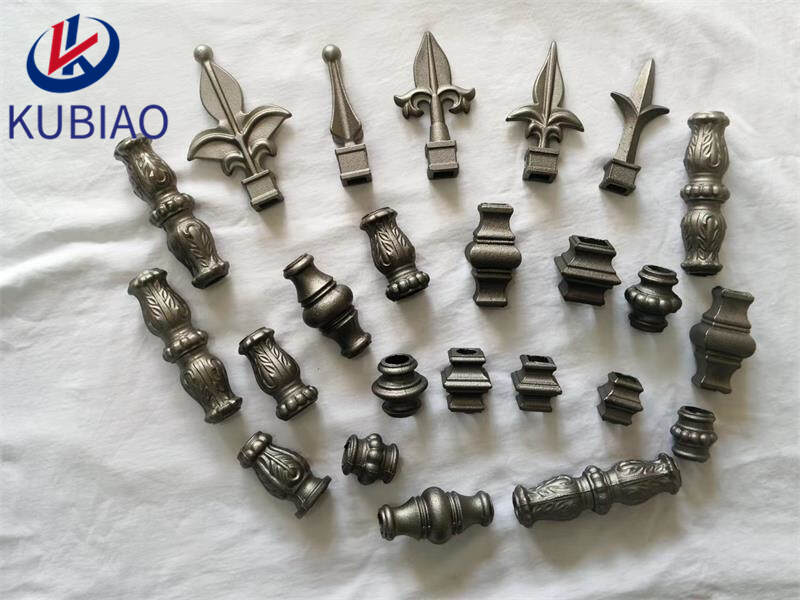
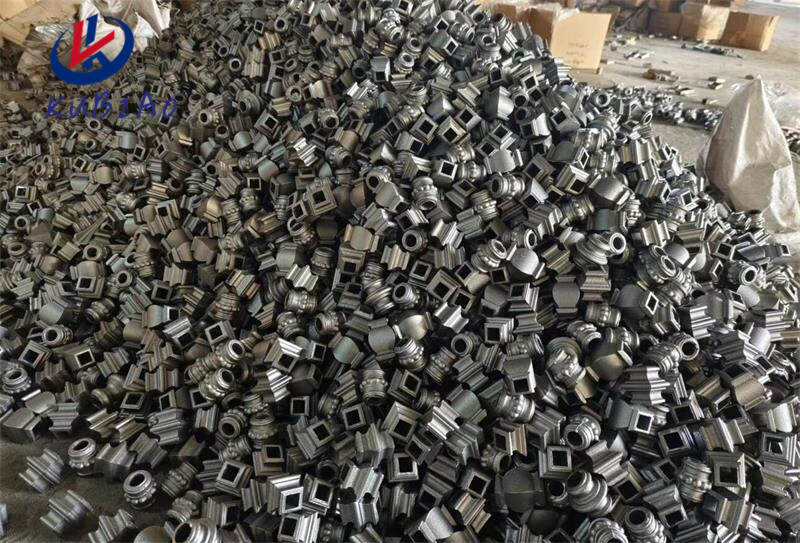
Production
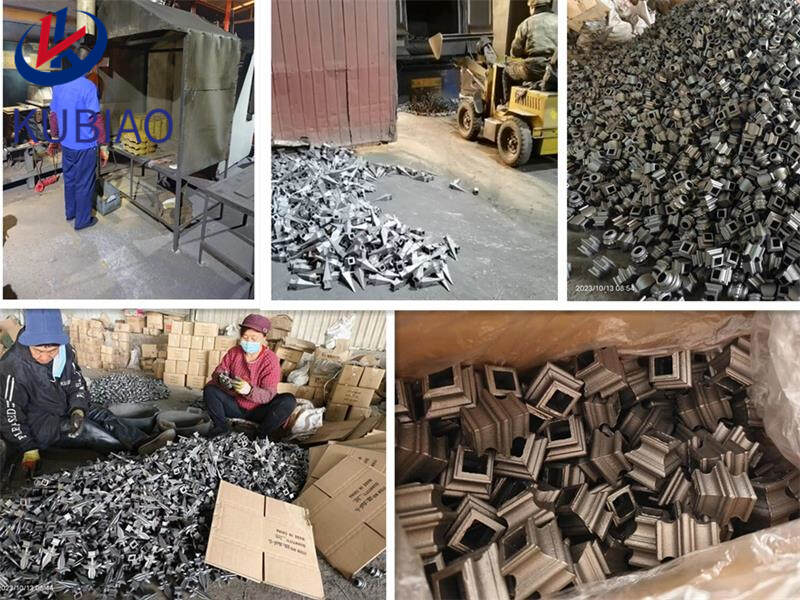
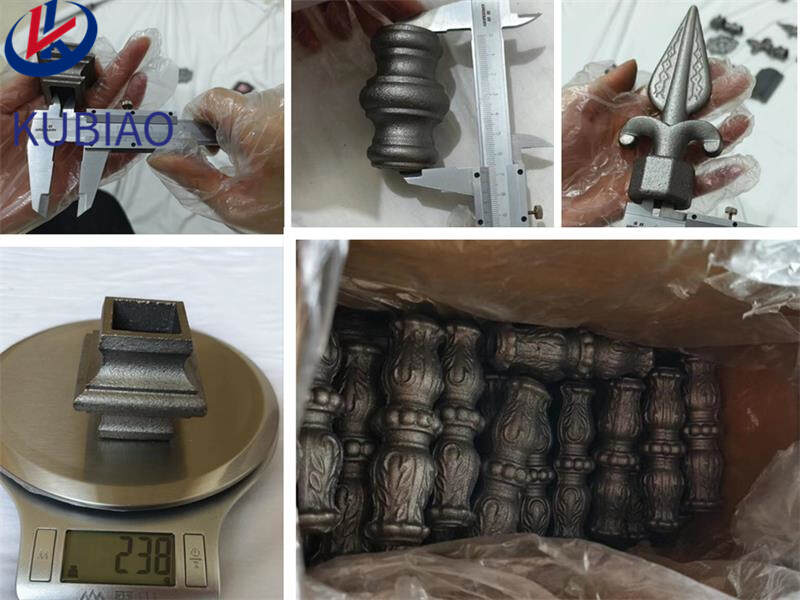
Packing and Shipping
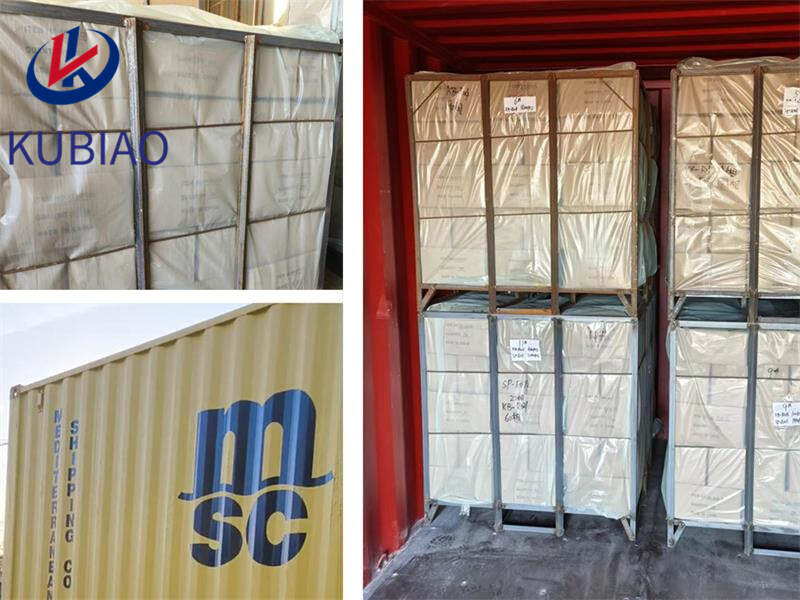
|
Product name |
ornamental iron |
|
Keyword |
ornamental iron gate part,ornamental cast iron spear ,cast iron accessories ,cast iron fence toppers,ornamental iron gate spears ,gate cast iron parts ,cast iron spear points,fence bases |
| Place of Origin | China |
|
Quality standard |
We have our own professional QC team to insure the quality. |
|
Feature |
Cast iron is a strong metal material that can withstand large amounts of pressure and weight. It is also durable and resistant to corrosion, making it ideal as a decorative item |
|
Application scope |
Park, etc. |
|
surface treatment |
sand blasting antirust antirust oil/water painting hot dip galvanizing |
|
Unit Weight(g) |
434(Contact us for specific information to confirm) |
|
terms of payment |
50% T/T in advance, balance before shipment. |
|
Life span |
19 years (Contact us for specific information to confirm) |
|
delivery time |
It usually takes 40 days. |
|
Advantage |
We keep good quality and competitive price to ensure our customers benefit |
|
Packing |
19x15.37x8.5cm(Contact us for specific information to confirm) |
|
OEM/ODM |
Customization Service Provided |
|
design |
beautiful elegance sleek pretty |
|
Sales country |
All over the world for example:Romania,Solomon Islands,American Samoa,Djibouti,Burkina Faso,Papua New Guinea,Cote d'Ivoire,Niue,Mexico |
|
MOQ |
500pcs(Contact us for specific information to confirm) |
About US
SHIJIAZHUANG KUBIAO TRADING CO.LTD Established in the year of 2005,are a manufacturer and trade company who is specialized in exporting decorative iron products, with a wide range, quality, reasonable price and stylish designs. Our products are extensively used in fence gate and garden.
They are widelyr ecognized and trusted by users and can meet continuously changing economic and social needs. All the employees in this team have more than 10 years of export experience, with an average of 7 years in Wrought Iron. We can provide one stop serive. If you need other related products together, to us! We will use our experience to help you find the goods that satisfy you. Welcome new and regular customers for mutual sucess!
1.Can ornamental iron be used for functional purposes?
We pay attention to employee development and benefits, and provide a good working environment in order to improve the efficiency of employees and improve the quality management of ornamental iron products.
Yes, cast iron ornaments can be used for functional purposes such as door knockers, hooks, and brackets. They are durable and strong enough to support weight and perform their intended function. However, it is important to make sure that the ornament is properly installed and secured to ensure safety and stability.
2.Are there any collectible ornamental iron?
We have a professional team that is committed to the innovation and development of ornamental iron.
Yes, there are many collectible cast iron ornaments available. Some popular examples include vintage cast iron doorstops, bookends, figurines, and holiday decorations. These items are highly sought after by collectors due to their historical significance, intricate designs, and durability. Some well-known brands that produce collectible cast iron ornaments include Hubley, Bradley & Hubbard, and Griswold.
3.What are the differences between antique and new ornamental iron?
We continuously upgrade our skills and knowledge to adapt to changing ornamental iron market needs.
1. Age: The most obvious difference between antique and new cast iron ornaments is their age. Antique cast iron ornaments are typically at least 100 years old, while new ones are recently manufactured.
2. Design: Antique cast iron ornaments often have intricate and detailed designs, reflecting the craftsmanship of the time period they were made in. New cast iron ornaments may have simpler and more modern designs.
3. Rarity: Due to their age, antique cast iron ornaments are often more rare and harder to find than new ones. This can make them more valuable to collectors.
4. Quality: Antique cast iron ornaments were often made with high-quality materials and craftsmanship, resulting in a more durable and long-lasting product. New cast iron ornaments may not have the same level of quality and may be more prone to damage.
5. Patina: Antique cast iron ornaments have a natural patina that develops over time, giving them a unique and aged appearance. New cast iron ornaments may lack this patina and may look more uniform and shiny.
6. Price: Due to their rarity and historical value, antique cast iron ornaments can be more expensive than new ones. New cast iron ornaments are often more affordable and readily available.
7. Authenticity: Antique cast iron ornaments have a sense of authenticity and history that cannot be replicated in new ones. They have a story and a connection to the past that adds to their charm and value.
8. Collectibility: Antique cast iron ornaments are highly sought after by collectors, making them a valuable and desirable item. New cast iron ornaments may not hold the same level of collectibility.
9. Condition: Antique cast iron ornaments may have some wear and tear due to their age, while new ones are in pristine condition. This can affect their appearance and value.
10. Purpose: Antique cast iron ornaments were often used for practical purposes, such as architectural details or garden decorations. New cast iron ornaments may be more decorative and used solely for aesthetic purposes.
4.Why are ornamental iron commonly used in outdoor settings?
We adhere to the principle of integrity and transparency, and establish long -term relationships with partners, and we attach great importance to this detail.
1. Durability: Cast iron is a strong and durable material that can withstand harsh outdoor conditions such as rain, wind, and sunlight. It is resistant to rust and corrosion, making it a long-lasting choice for outdoor use.
2. Weather-resistant: Cast iron is able to withstand extreme temperatures without cracking or warping, making it suitable for use in both hot and cold climates.
3. Weight: Cast iron is a heavy material, which makes it less likely to be blown over by strong winds or knocked over by animals or people. This makes it a safe and stable choice for outdoor settings.
4. Decorative: Cast iron ornaments come in a variety of intricate and decorative designs, making them a popular choice for adding visual interest and charm to outdoor spaces.
5. Low maintenance: Cast iron ornaments require minimal maintenance, making them a convenient choice for outdoor settings. They can be easily cleaned with soap and water and do not need to be repainted or refinished regularly.
6. Versatility: Cast iron ornaments can be used in a variety of outdoor settings, from gardens and patios to parks and public spaces. They can also be used for a range of purposes, such as garden edging, planters, and decorative accents.
7. Historical significance: Cast iron has been used for outdoor ornaments for centuries, giving it a sense of tradition and history. This adds to its appeal and makes it a popular choice for traditional and historic outdoor spaces.
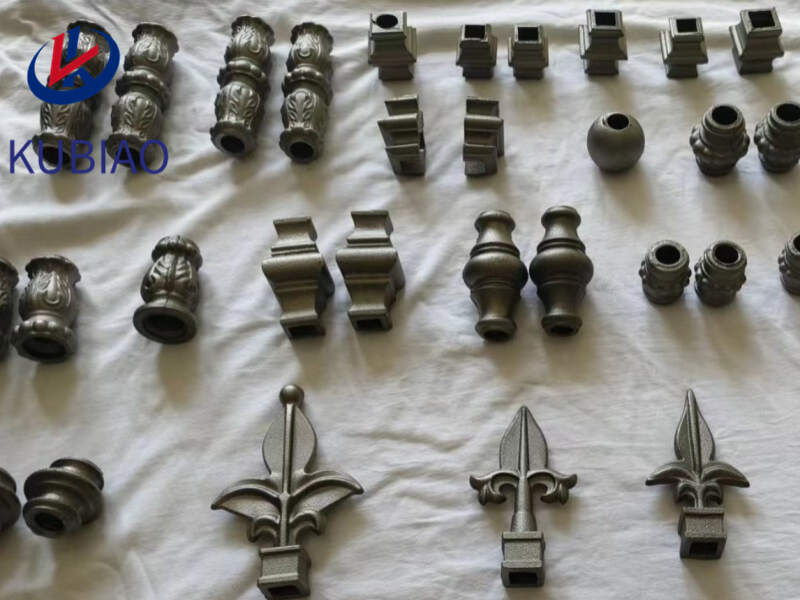
5.Are ornamental iron weather-resistant?
We maintain a stable growth through reasonable capital operations, focus on industry development trends and cutting -edge technologies, and focus on product quality and safety performance.
Yes, cast iron ornaments are weather-resistant. They are made from a durable and strong material that can withstand various weather conditions, including rain, snow, and extreme temperatures. However, over time, they may develop rust if not properly maintained. It is recommended to regularly clean and seal cast iron ornaments to ensure their longevity and weather-resistance.
6.What types of designs can be found on ornamental iron?
As one of the ornamental iron market leaders, we are known for innovation and reliability.
1. Floral designs: These can include intricate patterns of flowers, leaves, and vines.
2. Animal designs: Cast iron ornaments can feature various animals such as birds, butterflies, horses, and more.
3. Geometric designs: These can range from simple geometric shapes to more complex patterns and designs.
4. Architectural designs: Cast iron ornaments can also feature architectural elements such as columns, arches, and pillars.
5. Religious designs: Some cast iron ornaments may have religious symbols or figures, such as crosses or angels.
6. Nautical designs: These can include anchors, ships, lighthouses, and other maritime elements.
7. Mythological designs: Cast iron ornaments may also feature mythical creatures such as dragons, unicorns, or mermaids.
8. Traditional designs: These can include classic designs such as fleur-de-lis, scrolls, and medallions.
9. Seasonal designs: Some cast iron ornaments may have designs related to specific seasons, such as snowflakes for winter or flowers for spring.
10. Custom designs: Many cast iron ornaments can be custom-made with personalized designs, such as family names or monograms.
7.How do I protect ornamental iron during extreme weather conditions?
We focus on providing high ornamental iron quality products and services.
1. Apply a protective coating: Before extreme weather hits, apply a protective coating to your cast iron ornaments. This can be a clear sealant or a coat of paint specifically designed for metal surfaces. This will create a barrier between the ornament and the elements, preventing rust and corrosion.
2. Bring them indoors: If possible, bring your cast iron ornaments indoors during extreme weather conditions. This will protect them from rain, snow, and harsh winds. If you have a covered porch or patio, you can also move them there for added protection.
3. Cover them up: If bringing the ornaments indoors is not an option, cover them with a tarp or plastic sheeting. This will protect them from direct exposure to rain and snow. Make sure to secure the cover tightly to prevent it from blowing away in strong winds.
4. Keep them off the ground: If your ornaments are placed on the ground, they are more susceptible to damage from moisture and freezing temperatures. Elevate them on a pedestal or stand to keep them off the ground and away from standing water.
5. Remove snow and ice: If your ornaments do get covered in snow or ice, make sure to remove it as soon as possible. The weight of snow and ice can cause damage to the delicate details of the ornament and can also lead to rusting.
6. Regular maintenance: Regularly inspect your cast iron ornaments for any signs of damage or rust. If you notice any issues, address them immediately to prevent further damage.
7. Store them properly: If you live in an area with extreme weather conditions, consider storing your cast iron ornaments indoors during the off-season. This will protect them from prolonged exposure to harsh elements and extend their lifespan.
8.Are there any famous examples of ornamental iron in famous buildings?
We have established long-term and stable partnerships with our suppliers, so we have great advantages in price and cost and quality assurance.
1. Eiffel Tower - The iconic Parisian landmark features cast iron ornaments in its intricate lattice design.
2. Grand Central Terminal - The main concourse of this New York City train station is adorned with cast iron chandeliers and decorative elements.
3. Buckingham Palace - The gates and railings of the royal residence in London are made of cast iron, featuring ornate designs and crests.
4. St. Pancras Station - This Victorian railway station in London is known for its elaborate cast iron roof and decorative elements.
5. New York Public Library - The main branch of the NYPL features cast iron lamp posts and decorative grilles on its exterior.
6. The Palace of Westminster - The Houses of Parliament in London feature cast iron elements, including the iconic Big Ben clock tower.
7. The Iron Bridge - This 18th century bridge in Shropshire, England is considered a masterpiece of cast iron engineering and design.
8. The Smithsonian Castle - The oldest building on the National Mall in Washington D.C. features cast iron columns and decorative elements.
9. The Royal Albert Hall - This concert hall in London features a cast iron dome and decorative friezes on its exterior.
10. The Flatiron Building - This iconic New York City skyscraper is known for its unique triangular shape and cast iron facade.
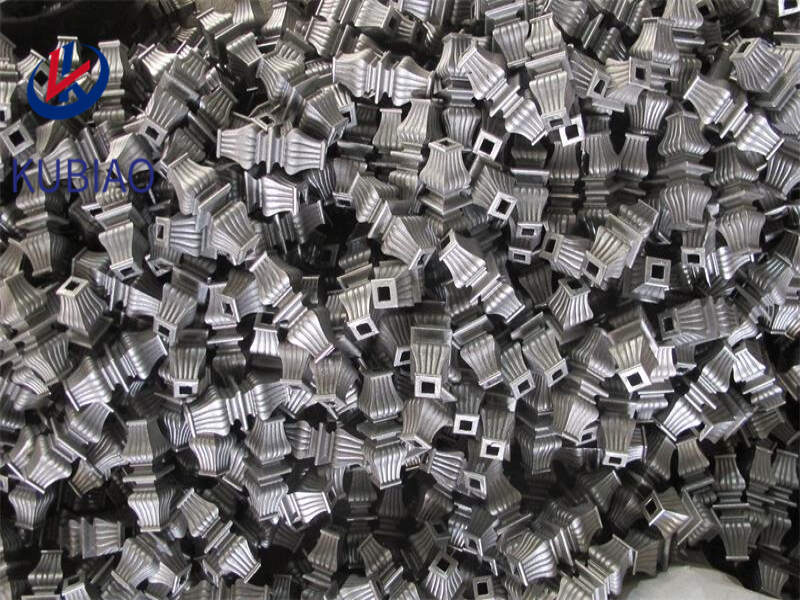
9.Are there any common design elements found in ornamental iron?
1. Intricate Details: Cast iron ornaments often feature intricate and detailed designs, such as floral patterns, scrollwork, and geometric shapes.
2. Curved and Organic Shapes: Many cast iron ornaments have curved and organic shapes, which are achieved through the casting process.
3. Symmetry: Symmetry is a common design element in cast iron ornaments, with designs often being mirrored on both sides.
4. Repetition: Many cast iron ornaments feature repeated patterns or motifs, creating a sense of unity and cohesion in the design.
5. Textures: Cast iron ornaments can have a variety of textures, including smooth, rough, and hammered surfaces, adding visual interest and depth to the design.
6. Finials and Fleur-de-lis: Finials, which are decorative end pieces, and fleur-de-lis, a stylized lily flower, are commonly found in cast iron ornaments, adding a touch of elegance and sophistication.
7. Gothic and Victorian Influences: Cast iron ornaments often draw inspiration from Gothic and Victorian architecture, featuring pointed arches, spires, and intricate details.
8. Natural Elements: Many cast iron ornaments incorporate natural elements, such as leaves, flowers, and animals, into their designs.
9. Rustic and Industrial Aesthetics: Cast iron ornaments can also have a rustic or industrial aesthetic, with rough textures and simple, geometric designs.
10. Black or Dark Colors: Due to the nature of cast iron, most ornaments are black or dark in color, adding a sense of drama and contrast to the design.
10.How do I determine the quality of ornamental iron?
We adhere to the principle of quality first and have a complete production quality management system and quality inspection process.
1. Weight: High-quality cast iron ornaments will feel heavy and solid in your hand. This is because cast iron is a dense and heavy material, so if the ornament feels lightweight or flimsy, it may be made of a lower quality material.
2. Smoothness: Run your hand over the surface of the ornament to feel for any rough or uneven areas. High-quality cast iron ornaments will have a smooth and even surface, with no bumps or imperfections.
3. Detailing: Look closely at the details of the ornament. High-quality cast iron ornaments will have crisp and intricate detailing, with no signs of smudging or blurring. Lower quality ornaments may have less defined details or may appear sloppy.
4. Finish: The finish of the ornament can also indicate its quality. High-quality cast iron ornaments will have a smooth and even finish, with no visible flaws or rough spots. Lower quality ornaments may have a rough or uneven finish, or may even have visible casting lines.
5. Rust resistance: Cast iron is prone to rust, so high-quality cast iron ornaments will have a protective coating or finish to prevent rusting. Check for any signs of rust or corrosion on the ornament, as this can indicate a lower quality product.
6. Durability: A good quality cast iron ornament should be able to withstand outdoor elements and last for many years. If the ornament feels flimsy or fragile, it may not be of good quality and may not last as long.
7. Price: While price is not always an indicator of quality, high-quality cast iron ornaments are typically more expensive than lower quality ones. If the price seems too good to be true, it may be an indication of lower quality.
8. Brand reputation: Do some research on the brand or manufacturer of the cast iron ornament. Reputable brands are more likely to produce high-quality products, so purchasing from a trusted brand can increase the chances of getting a good quality ornament.
11.What is the weight limit for hanging ornamental iron?
We have broad development space in domestic and foreign markets. ornamental iron have great advantages in terms of price, quality, and delivery date.
The weight limit for hanging cast iron ornaments can vary depending on the strength and stability of the hanging mechanism and the thickness and quality of the cast iron. In general, it is recommended to not exceed 10-15 pounds for hanging cast iron ornaments. It is always best to check the specific weight limit recommended by the manufacturer or consult with a professional for heavier or larger ornaments.
12.How have ornamental iron evolved over time?
We focus on innovation and continuous improvement to maintain a competitive advantage.
Cast iron ornaments have evolved significantly over time, both in terms of their design and production methods. Here are some key changes that have occurred:
1. Early designs: The earliest cast iron ornaments were simple and functional, such as door knockers, hinges, and fireplace tools. These were often made using sand casting techniques and had a utilitarian look.
2. Victorian era: In the mid-19th century, cast iron ornaments became more decorative and ornate, reflecting the Victorian love for intricate designs and embellishments. This era saw the rise of cast iron garden furniture, fountains, and statues, often featuring elaborate floral and animal motifs.
3. Industrial revolution: With the advent of the industrial revolution, cast iron ornaments became more affordable and accessible to the middle class. This led to a proliferation of cast iron products, including street lamps, railings, and building facades.
4. Art Nouveau and Art Deco: In the late 19th and early 20th centuries, cast iron ornaments were influenced by the Art Nouveau and Art Deco movements, which favored more fluid and geometric designs respectively. This led to the creation of cast iron gates, grilles, and other architectural elements with intricate patterns and motifs.
5. Modern era: In the 20th century, cast iron ornaments continued to evolve, with a focus on functionality and minimalism. Modern designs often feature clean lines and geometric shapes, and are used in a variety of applications, from furniture to home decor.
6. Production methods: While sand casting was the primary method of producing cast iron ornaments in the past, modern techniques such as die casting and investment casting have made the process more efficient and precise. This has allowed for the creation of more intricate and detailed designs.
7. Materials: While cast iron was the preferred material for ornaments in the past, modern advancements have led to the use of other materials such as aluminum and bronze. These materials offer greater strength and durability, while still retaining the look and feel of cast iron.
Overall, cast iron ornaments have evolved from simple and functional objects to highly decorative and versatile pieces, reflecting the changing tastes and advancements in technology over time.
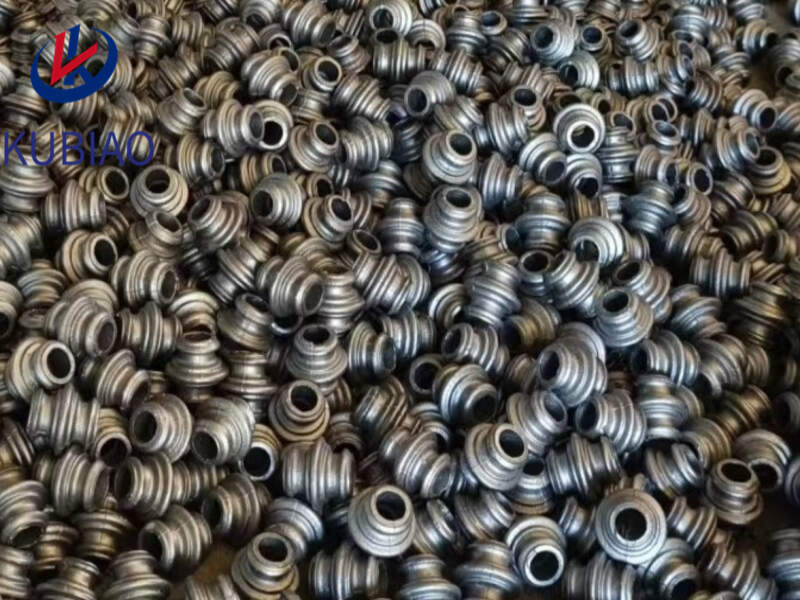
13.How are ornamental iron made?
We continue to improve ornamental iron products and processes to improve efficiency.
1. Creating a Design: The first step in making cast iron ornaments is to create a design. This can be done by hand-drawing or using computer-aided design (CAD) software.
2. Making a Mold: Once the design is finalized, a mold is created. This can be made from wood, metal, or other materials. The mold is usually made in two halves, with the design carved or etched into it.
3. Preparing the Iron: Cast iron is made by melting iron and adding other elements such as carbon, silicon, and manganese to create a strong and durable material. The iron is heated in a furnace until it reaches a molten state.
4. Pouring the Iron: Once the iron is molten, it is poured into the mold. The mold is usually preheated to prevent the iron from cooling too quickly and to ensure a smooth finish.
5. Cooling and Removal: The iron is left to cool and solidify in the mold. Once it has cooled, the mold is opened and the cast iron ornament is removed.
6. Finishing: The cast iron ornament may have rough edges or imperfections from the casting process. These are removed by grinding, sanding, or filing. The ornament may also be polished or painted to achieve the desired finish.
7. Inspection: The finished ornament is inspected for any defects or imperfections. Any necessary touch-ups or repairs are made at this stage.
8. Packaging and Shipping: The final step is to package the cast iron ornament for shipping or display. This may involve adding protective packaging or attaching hanging hardware if necessary.
Welcome to contact us for Cast Iron Order!
Email: sales@kubiaometal.com
Cellphone/Whatsapp: 0086 13020588163
Wechat: 13028588163
Tag:casting leaf,fence decorative collar,cast iron fence inserts,cast iron cap,iron door panel ,cast iron fence caps,metal fence ornament
PREV: ornamental spearheads
Product
Category